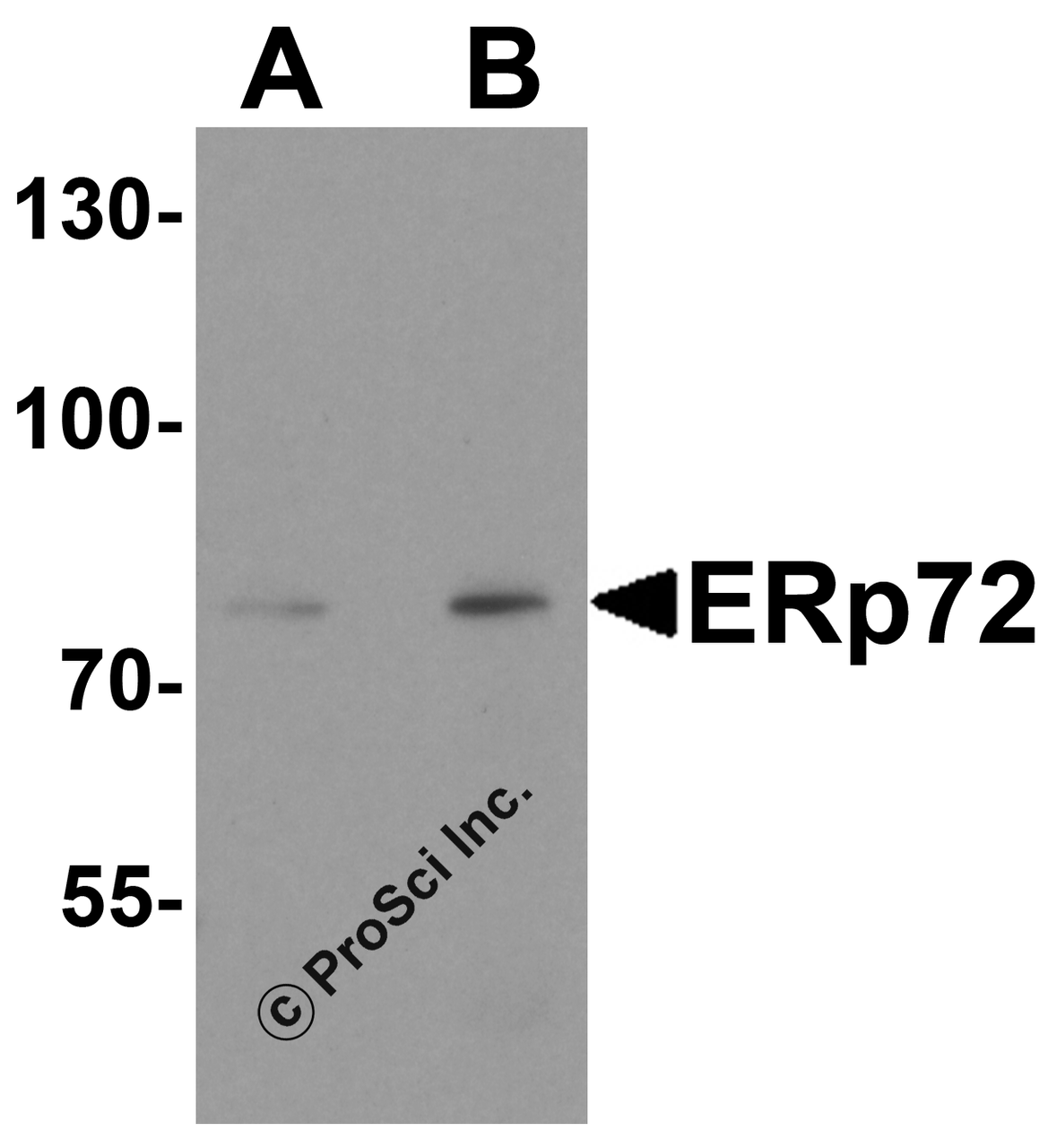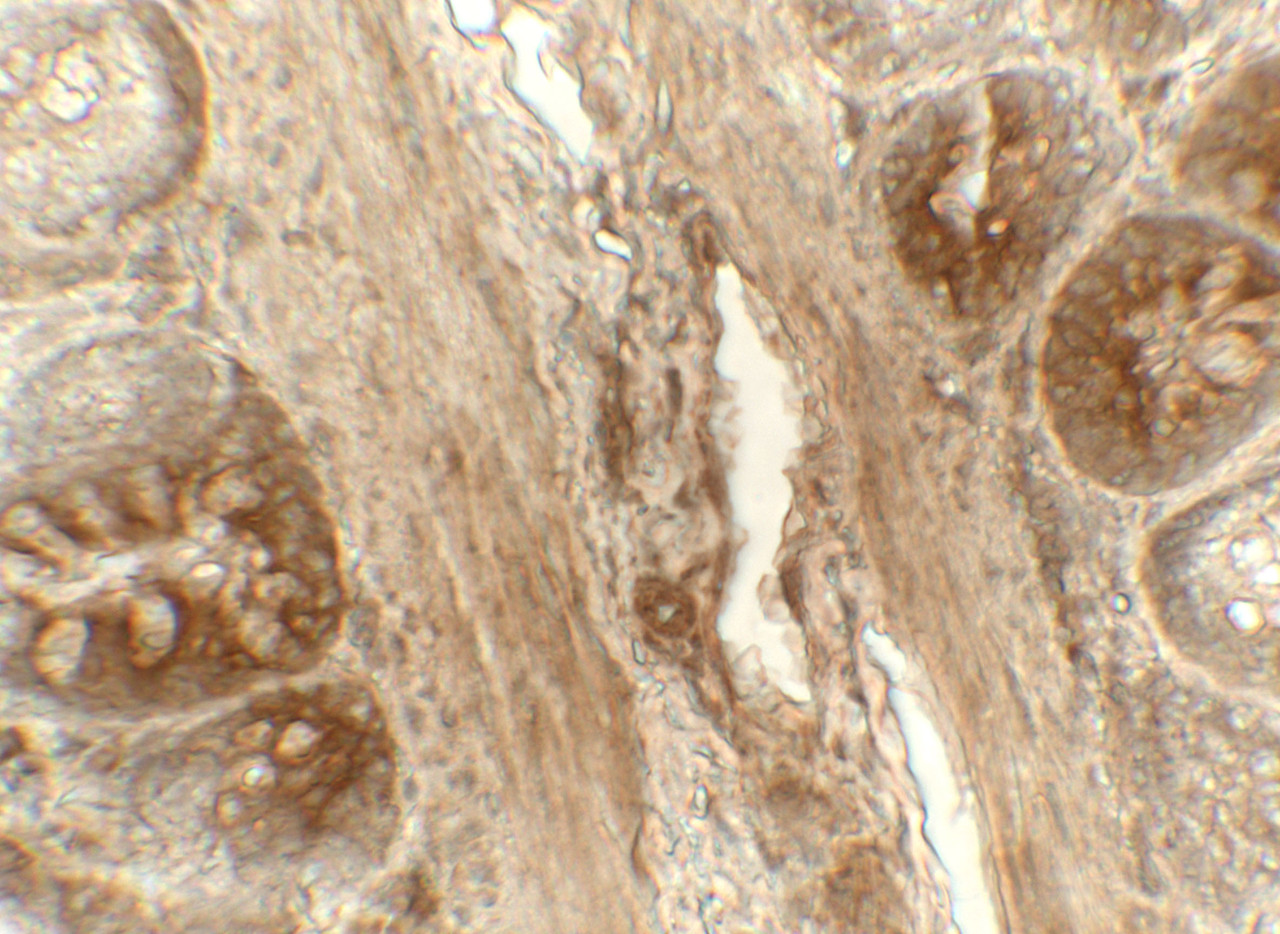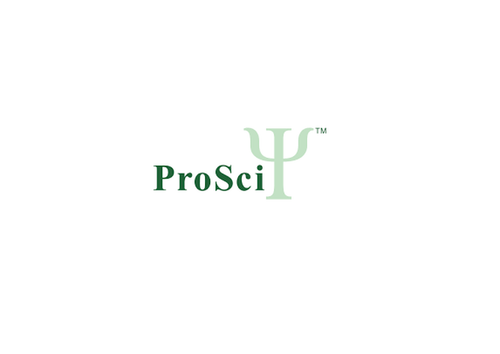Product Description
ERp72 Antibody | 8211 | ProSci
Host: Rabbit
Reactivity: Human, Mouse, Rat
Homology: Predicted species reactivity based on immunogen sequence: Bovine: (80%)
Immunogen: ERp72 antibody was raised against a 15 amino acid peptide near the carboxy terminus of human ERp72.
The immunogen is located within the last 50 amino acids of ERp72.
Research Area: Homeostasis
Tested Application: E, WB, IHC-P, IF
Application: ERp72 antibody can be used for detection of ERp72 by Western blot at 1 - 2 μg/ml. Antibody can also be used for immunohistochemistry starting at 5 μg/mL. For immunofluorescence start at 20 μg/mL.
Antibody validated: Western Blot in human samples; Immunohistochemistry in rat samples and Immunofluorescence in rat samples. All other applications and species not yet tested.
Specificiy: ERP72 antibody is human, mouse and rat reactive.
Positive Control 1: Cat. No. 1320 - Human Colon Tissue Lysate
Positive Control 2: N/A
Positive Control 3: N/A
Positive Control 4: N/A
Positive Control 5: N/A
Positive Control 6: N/A
Molecular Weight: Predicted: 71 kDa
Observed: 75 kDa
Validation: N/A
Isoform: N/A
Purification: ERp72 antibody is affinity chromatography purified via peptide column.
Clonality: Polyclonal
Clone: N/A
Isotype: IgG
Conjugate: Unconjugated
Physical State: Liquid
Buffer: ERp72 antibody is supplied in PBS containing 0.02% sodium azide.
Concentration: 1 mg/mL
Storage Condition: ERp72 antibody can be stored at 4˚C for three months and -20˚C, stable for up to one year.
Alternate Name: Protein disulfide isomerase family A member 4, Endoplasmic reticulum resident protein 70, Endoplasmic reticulum resident protein 72, ERp70, ERp-72
User Note: Optimal dilutions for each application to be determined by the researcher.
BACKGROUND: Protein disulfide isomerase (PDI) has two thioredoxin homology domains and catalyzes the formation and isomerization of these disulfide bonds (1, 2) . ER stress protein 72 (ERp72) , also designated protein disulfide-isomerase A4, is involved in the catalysis of protein -S-S- bond rearrangement (3) . It plays a role in the formation and isomerization of disulfide bonds (3, 4) .
 Euro
Euro
 USD
USD
 British Pound
British Pound
 NULL
NULL
















